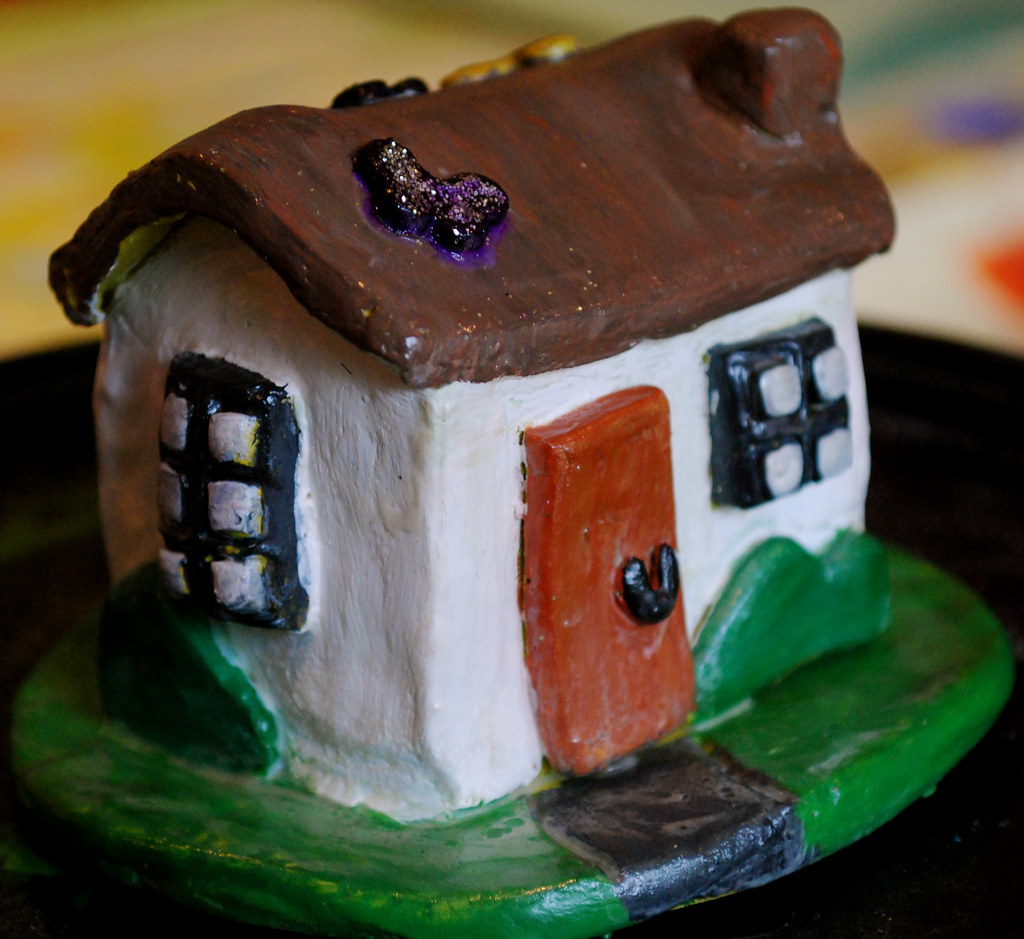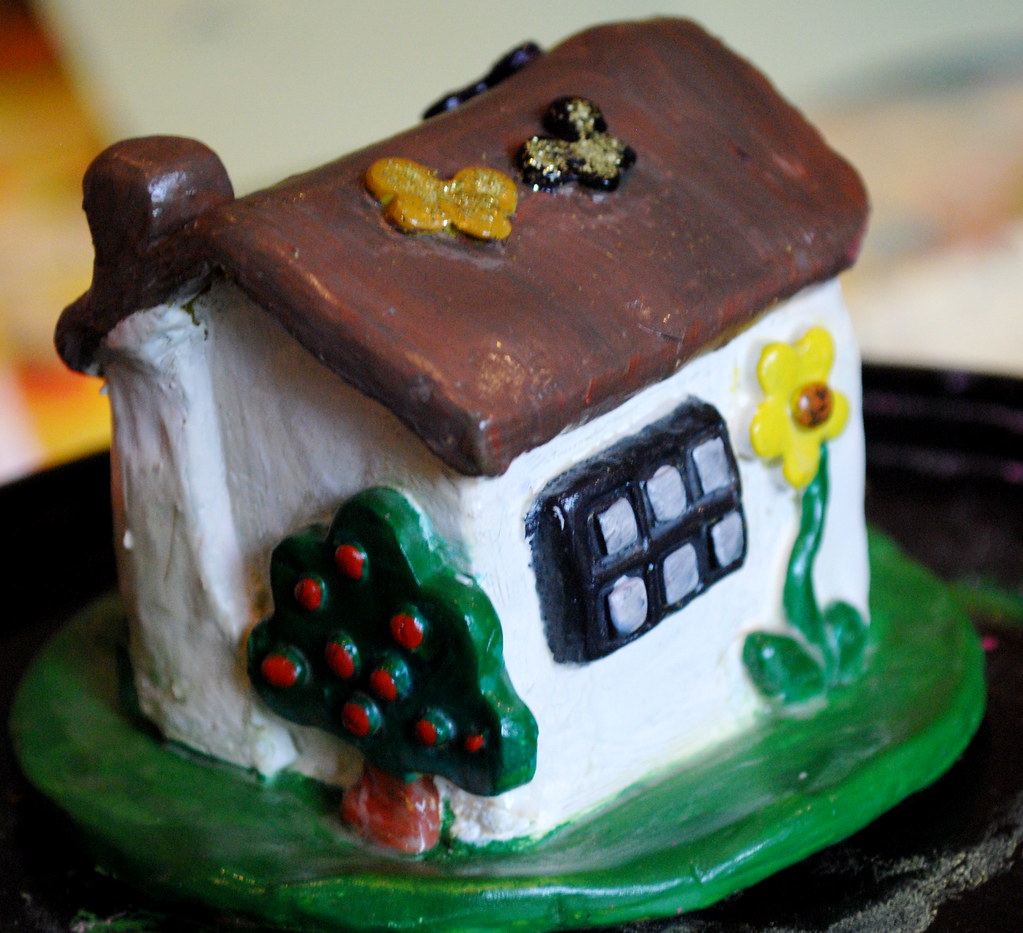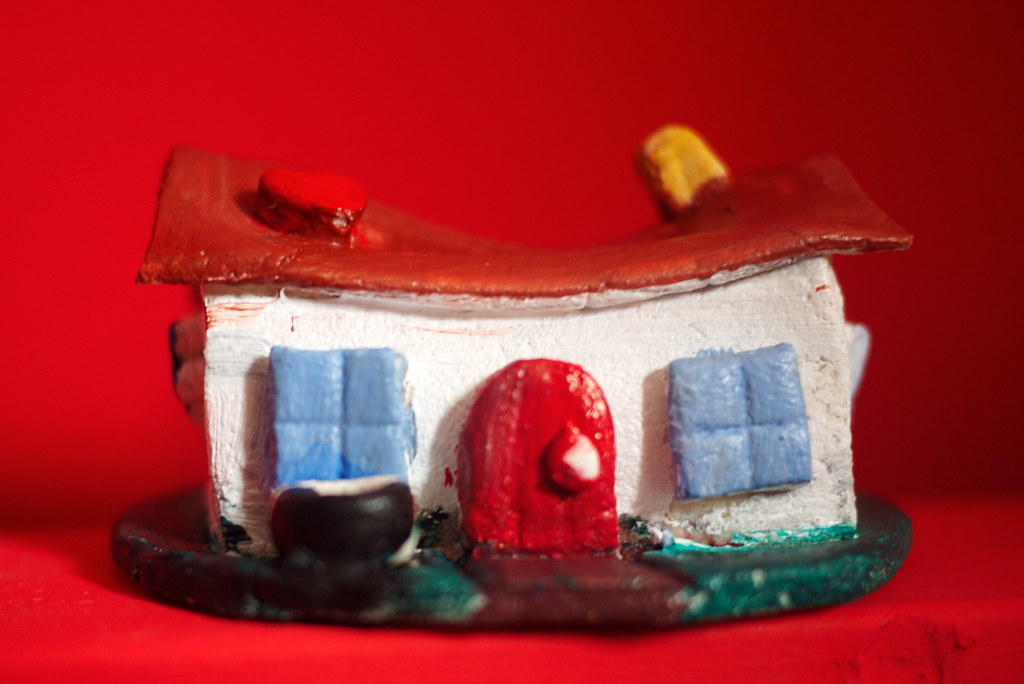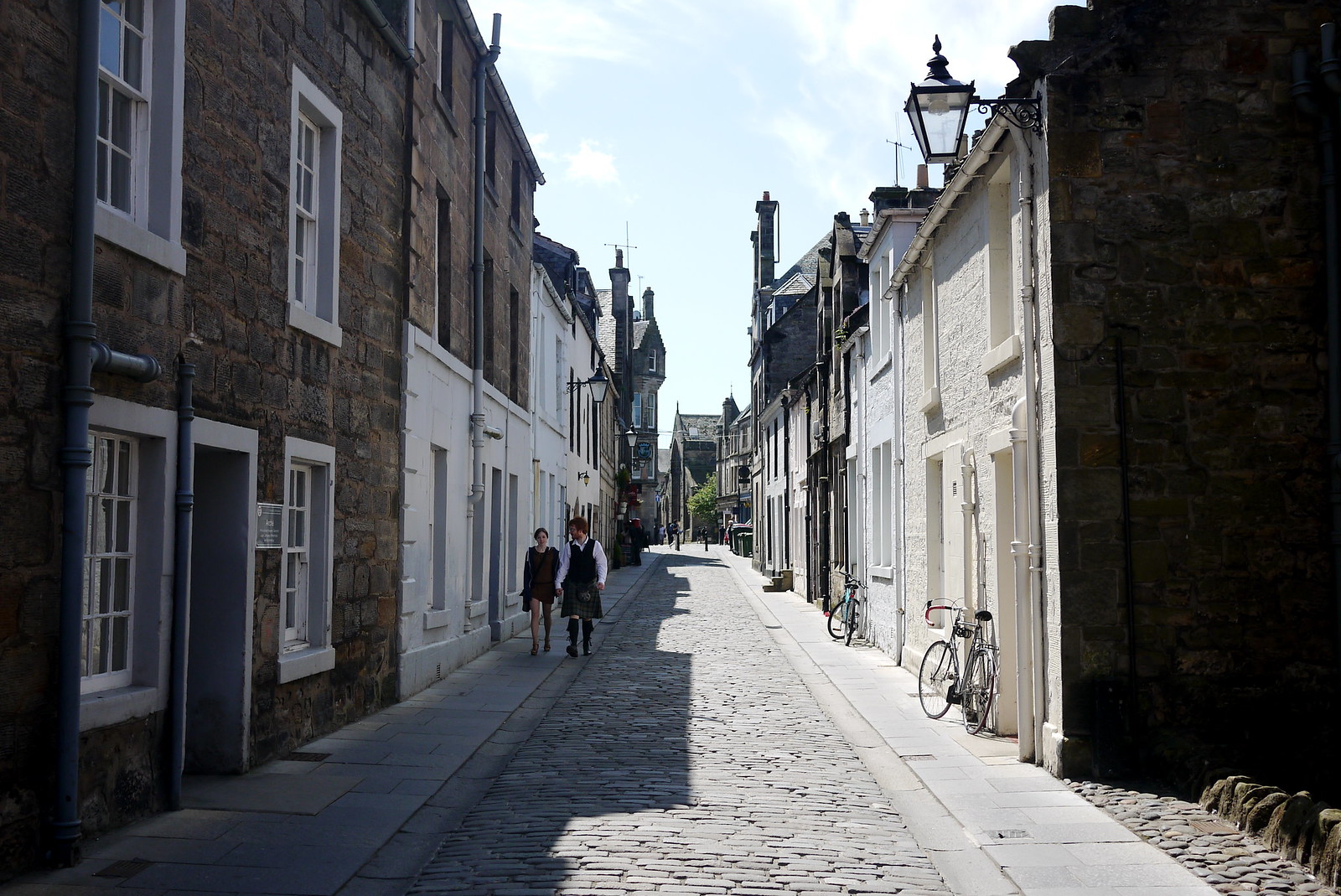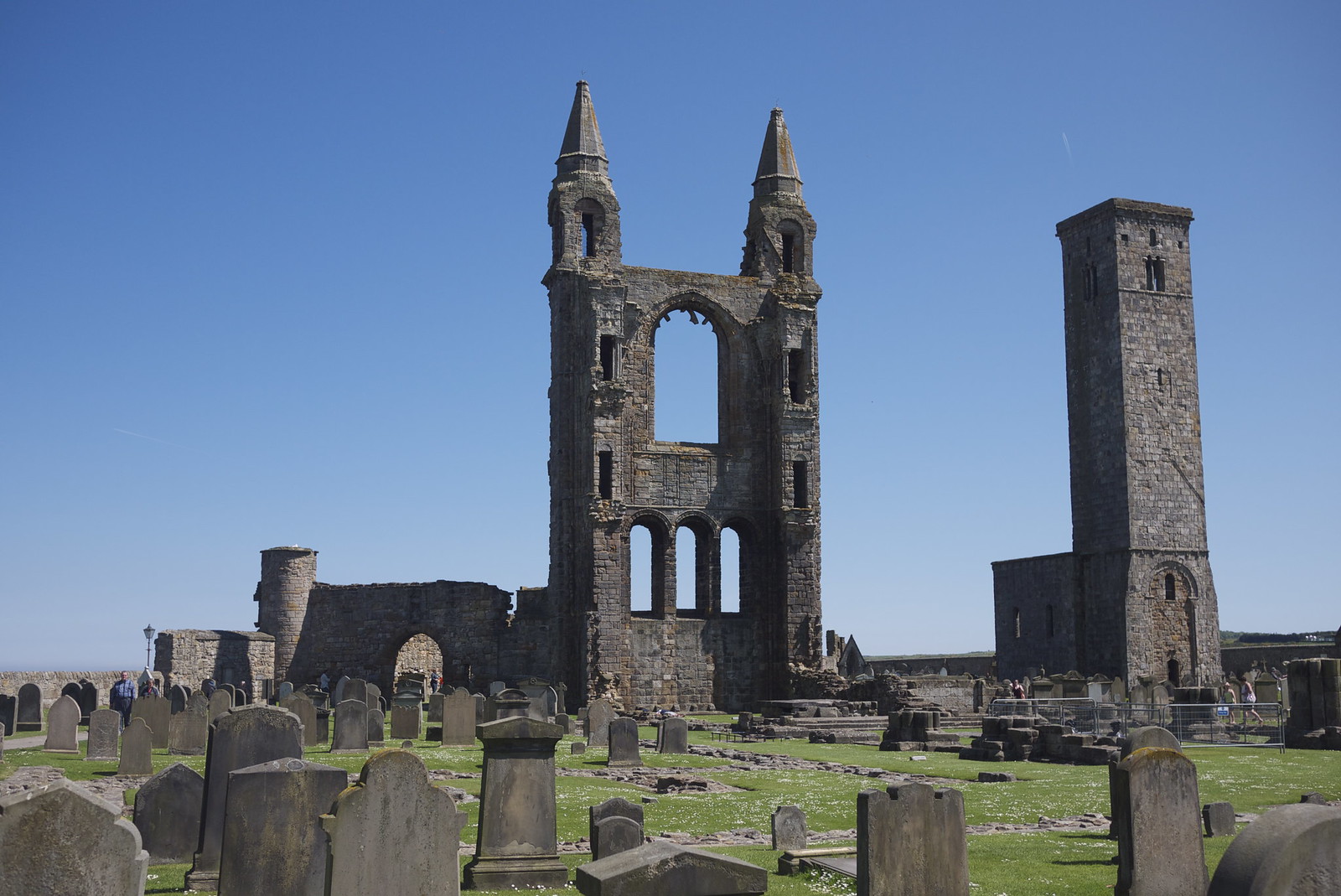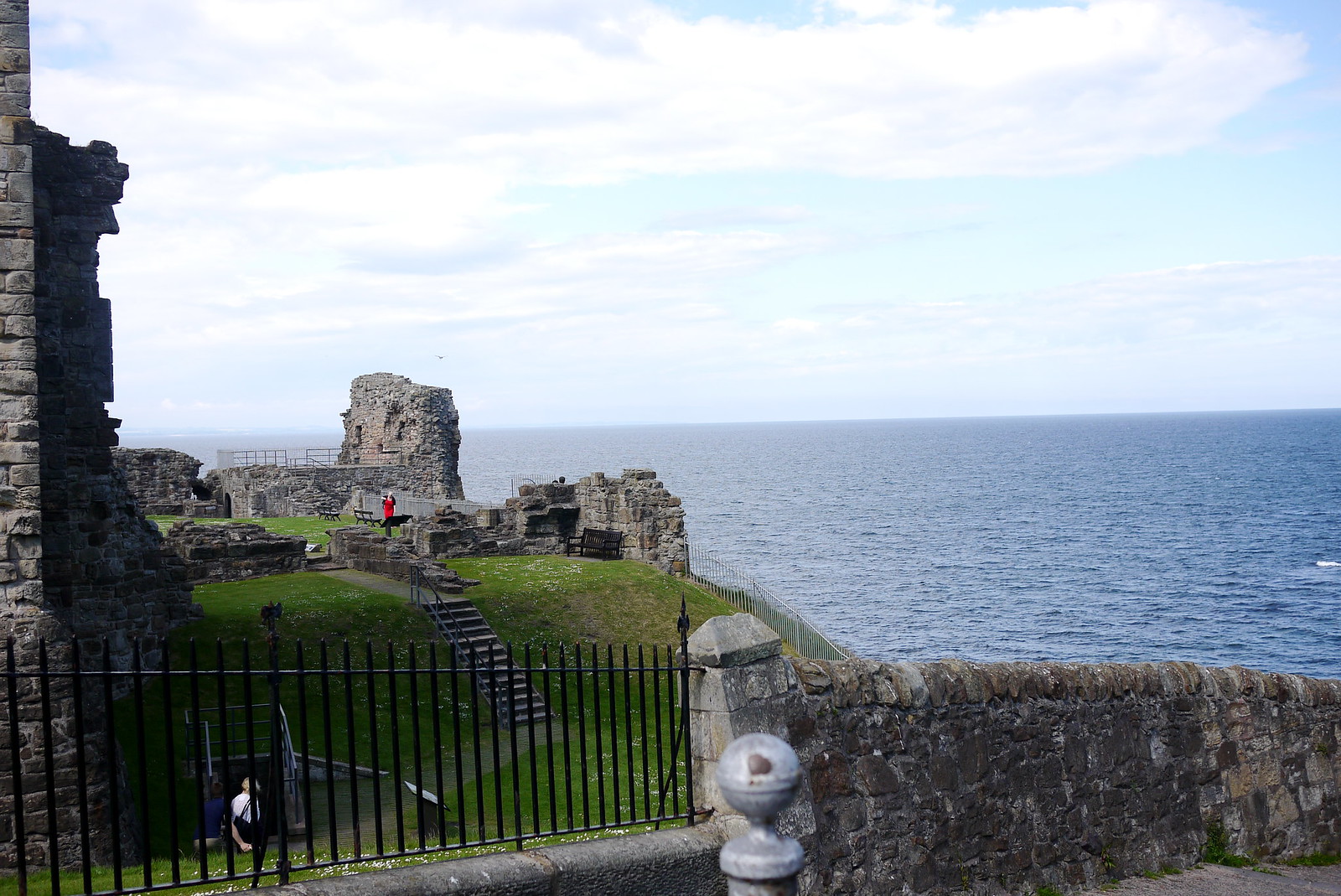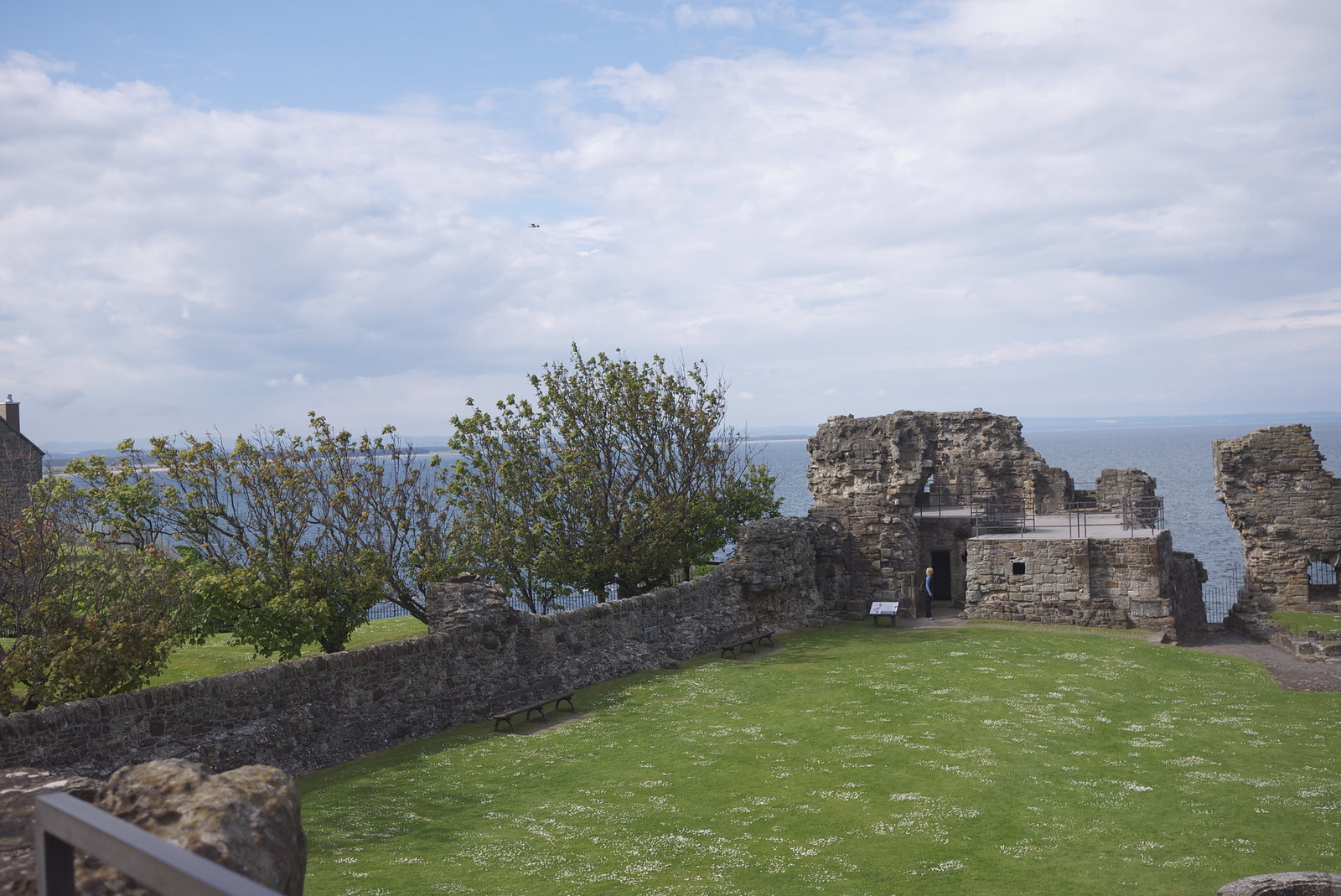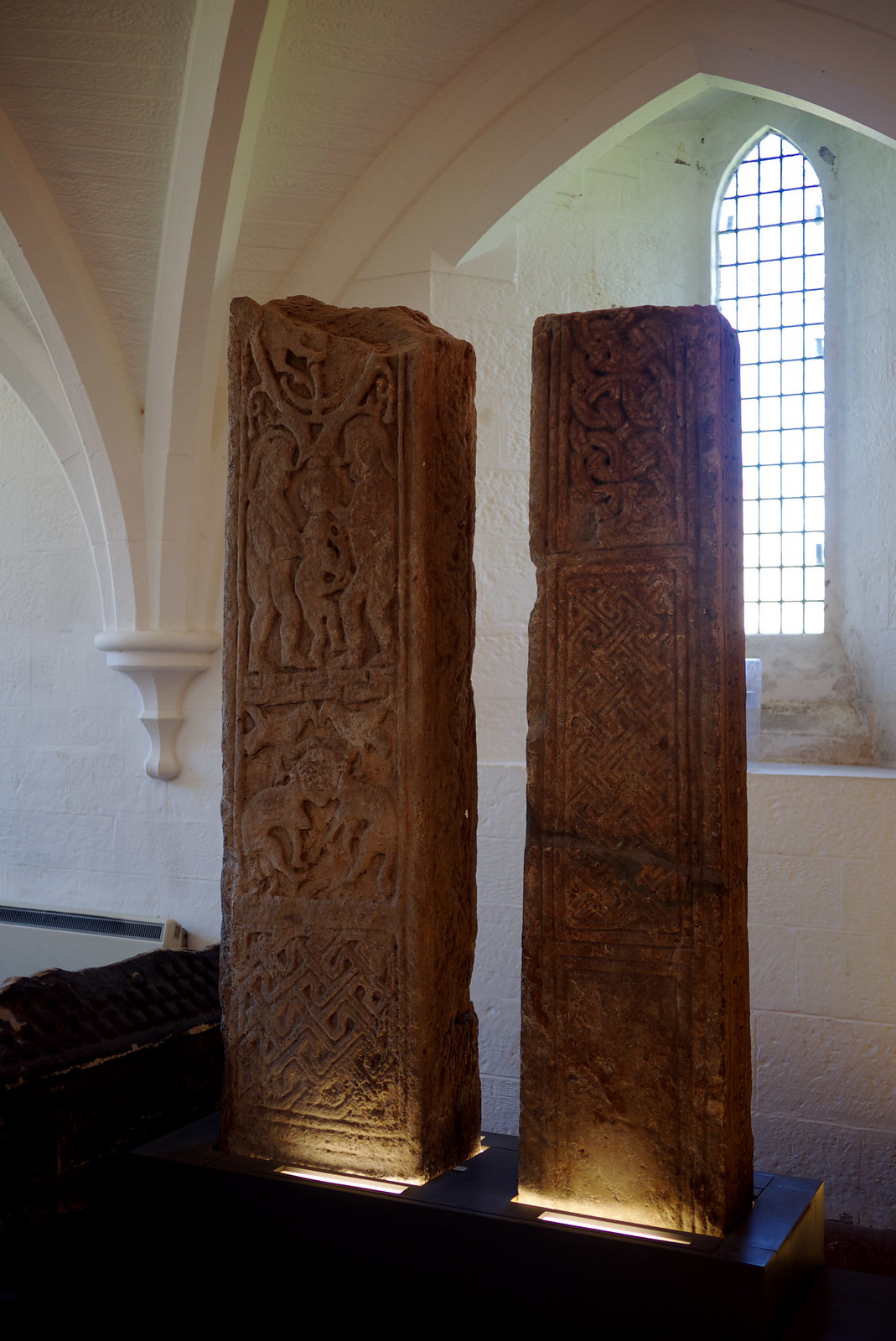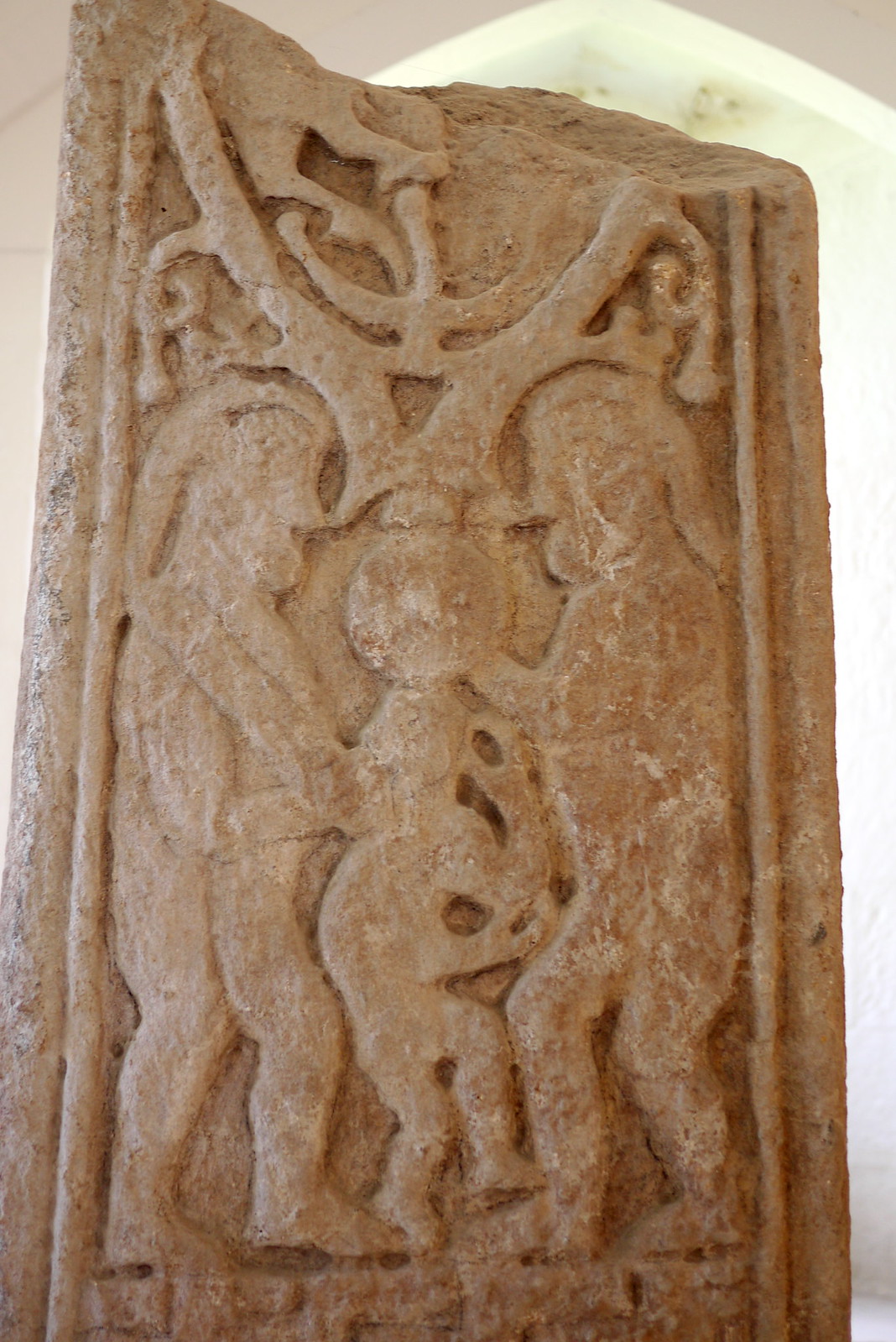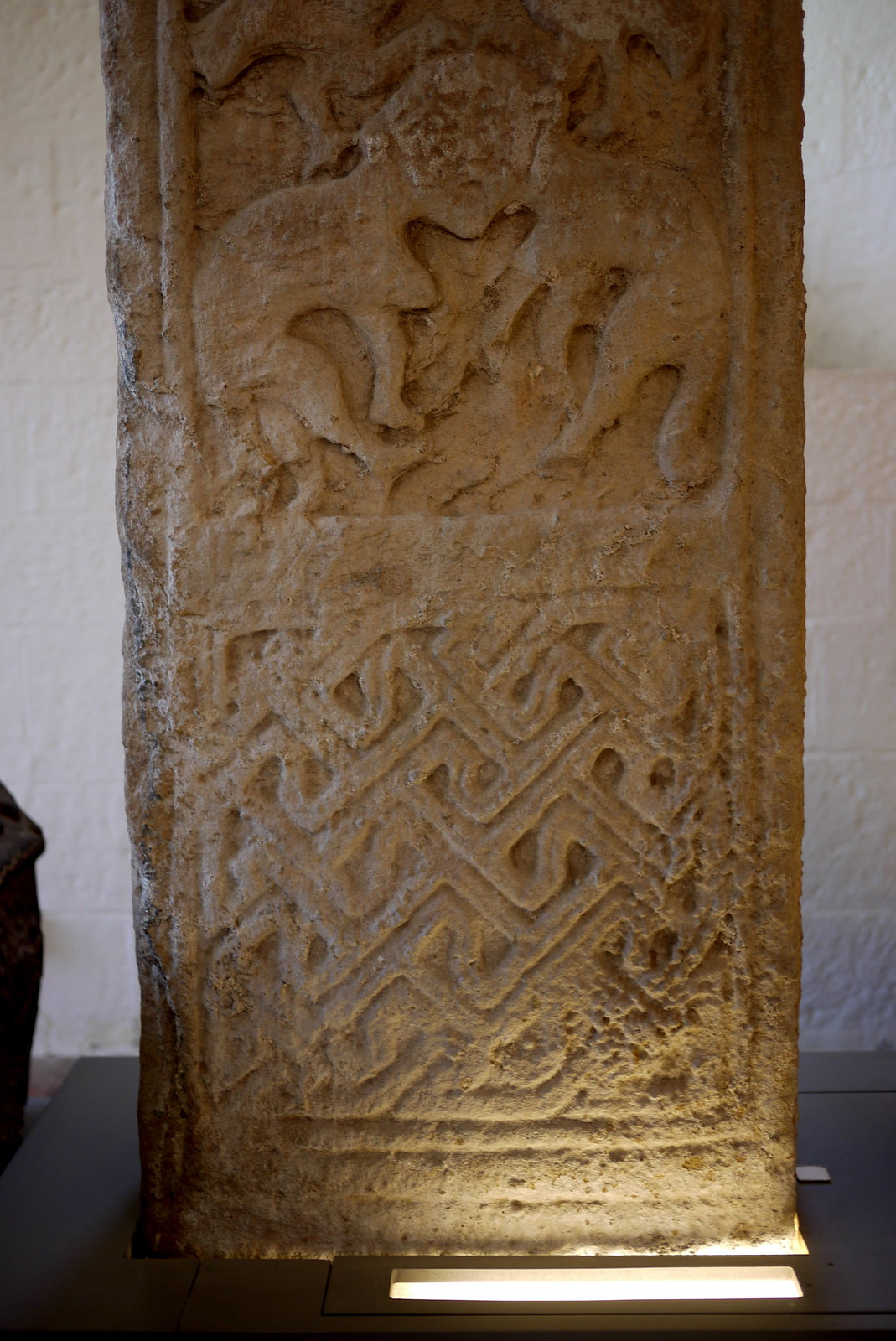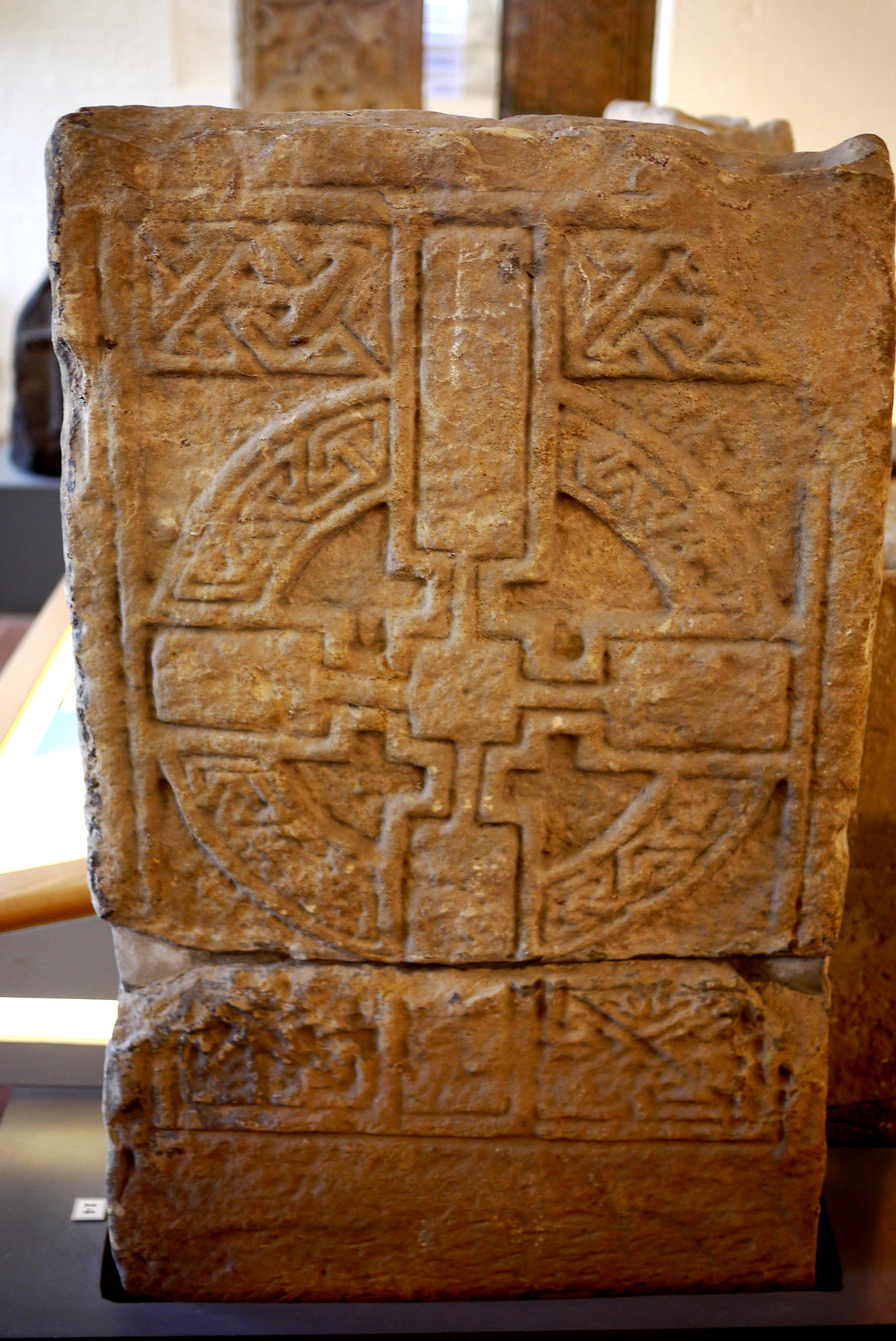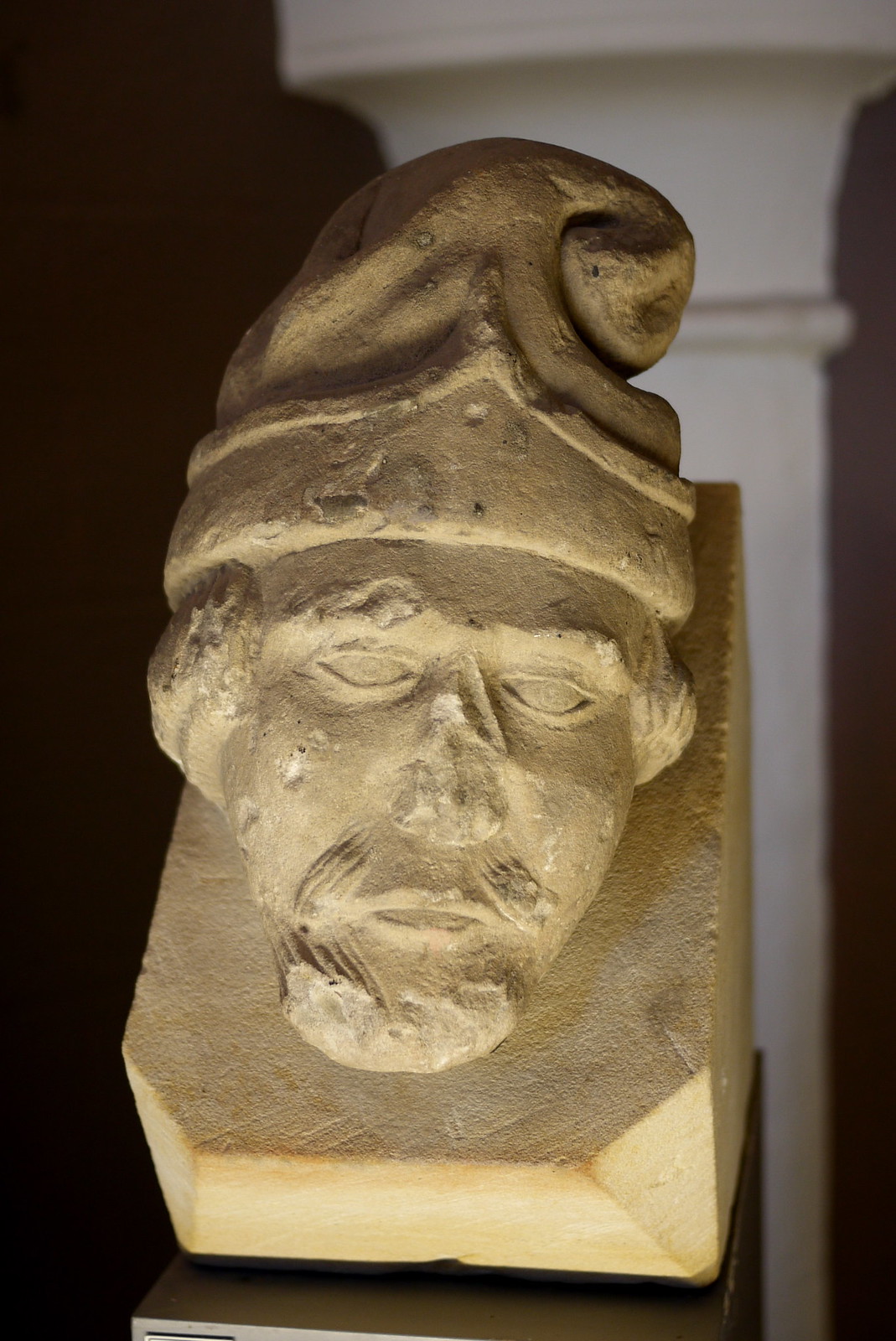They're of an age where they're more than happy to make their own entertainment for the most part now and many of Tom's friends like to come round and
The past few years we've had a wee informal sort of celebration that kind of ties in with the Midsummer festivities, and this year was no different (although involving less cake than usual). One day a few weeks ago when Rosie was off school with a rotten cold we made some salt dough and cut out some shapes and made a wee hobhouse for the kids' bedroom, which we finally got round to painting and decorating just in time for school finishing.
I made a hobhouse not long after we moved into where we live just now, on the suggestion of Judith (whose book I just reviewed), after experiencing some of the usual odd-things-going-missing-testing-and-feeling-out sort of stuff that can come with settling into sharing a space with new spirits:
The hobhouse lives on my shrine-shelf and seems to keep the wee spirit happy. I give the occasional dab of milk to him but I don't pay too much attention; he prefers to just get on with things. But the hobhouse has been much admired by Rosie who's wanted to make one for herself for a while now, and with plenty of salt dough to go around I figured we could make one together. Rosie painted most of it herself but – ever the perfectionist – began to get frustrated with splodges, so I helped out with the fiddly bits. She's of the mind that painting over splodges is wrong because even if they're hidden, she'll still know they're there. It's hard being a Rosie sometimes.
So in spite of a few splodges, we ended up with this:
(The roof sagged as the dough dried – Rosie wants to write a note to whoever might move in to say sorry about that. We did what we could). It's currently living on the kids' bookshelf in their bedroom, and I've suggested that Rosie could put some other bits and pieces with it – some shells and stones and other kinds of things she likes to pick up when we're out and about, like I have. I'm running out of space on my shrine to take anymore, anyway...
The shapes we cut out have been painted and varnished with a protective coating which I'm hoping will help protect them from the weather. After the kids' finished school on Wednesday we all went out to the garden and hung them up on the rowan:
Tom wasn't particularly interested in the decorating process, but he did decide to blow bubbles (with a tub he got as a gift from his teacher...not just random bubbles) in support as I tied them on to the branches. And so begins our holidays.
